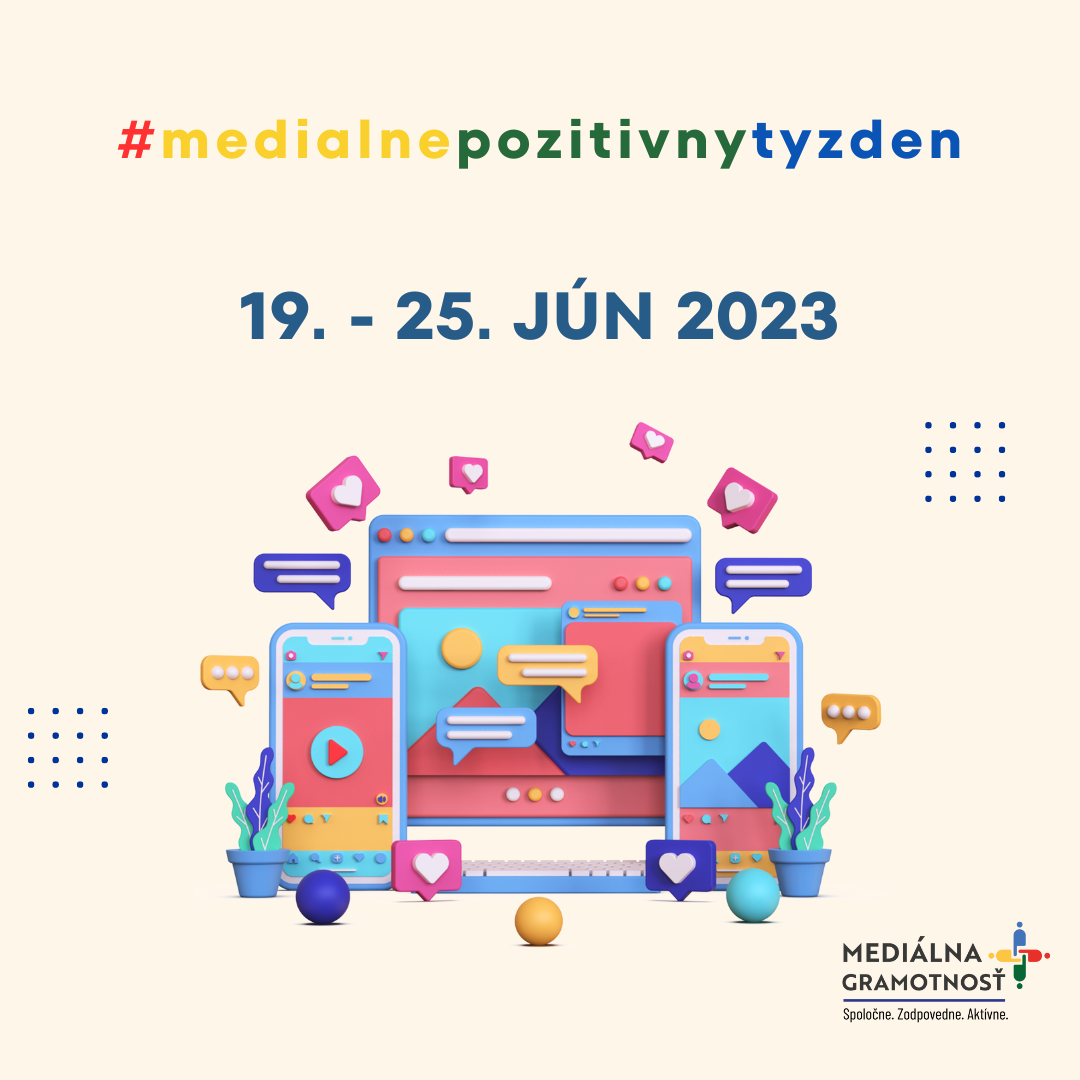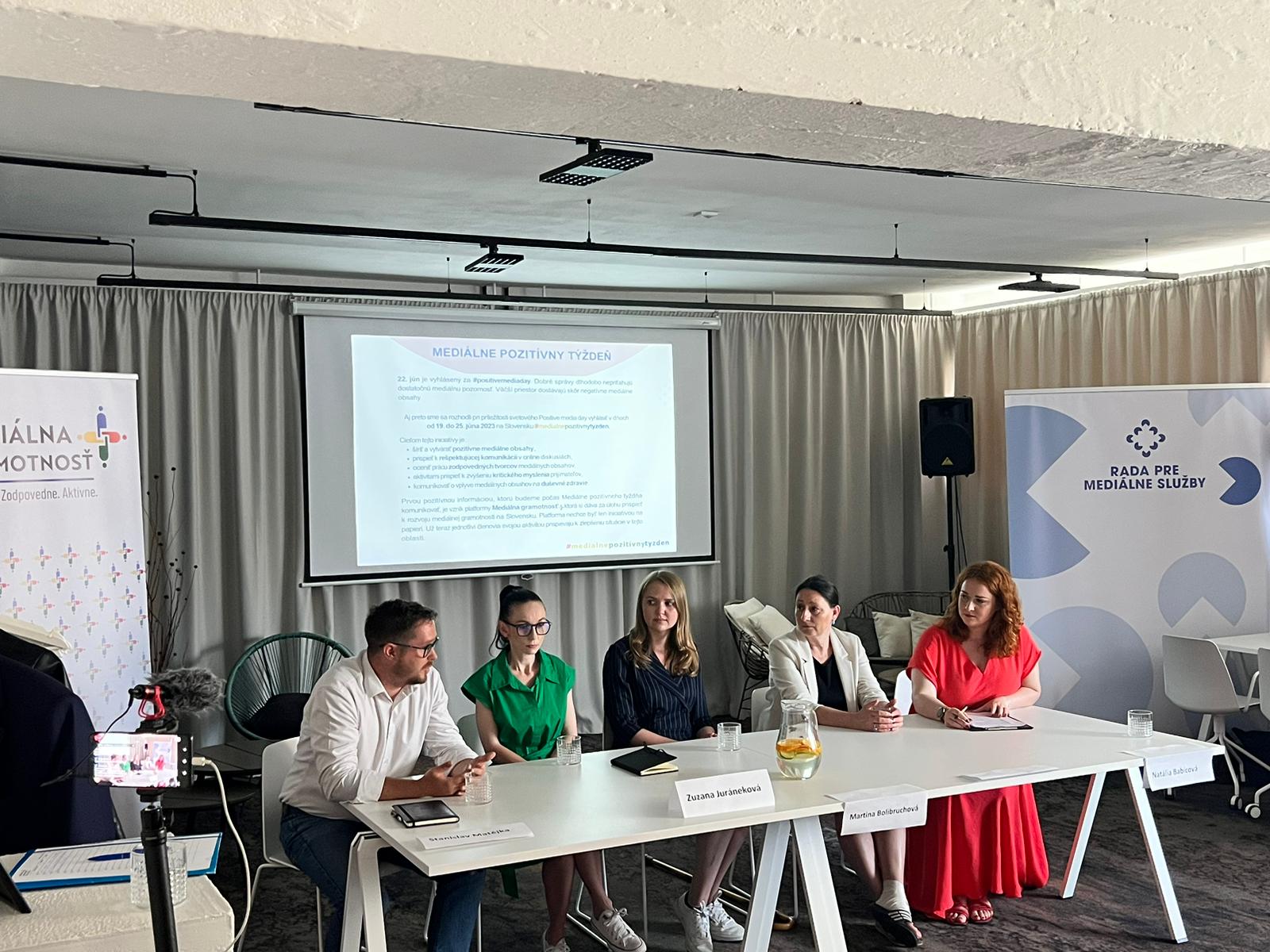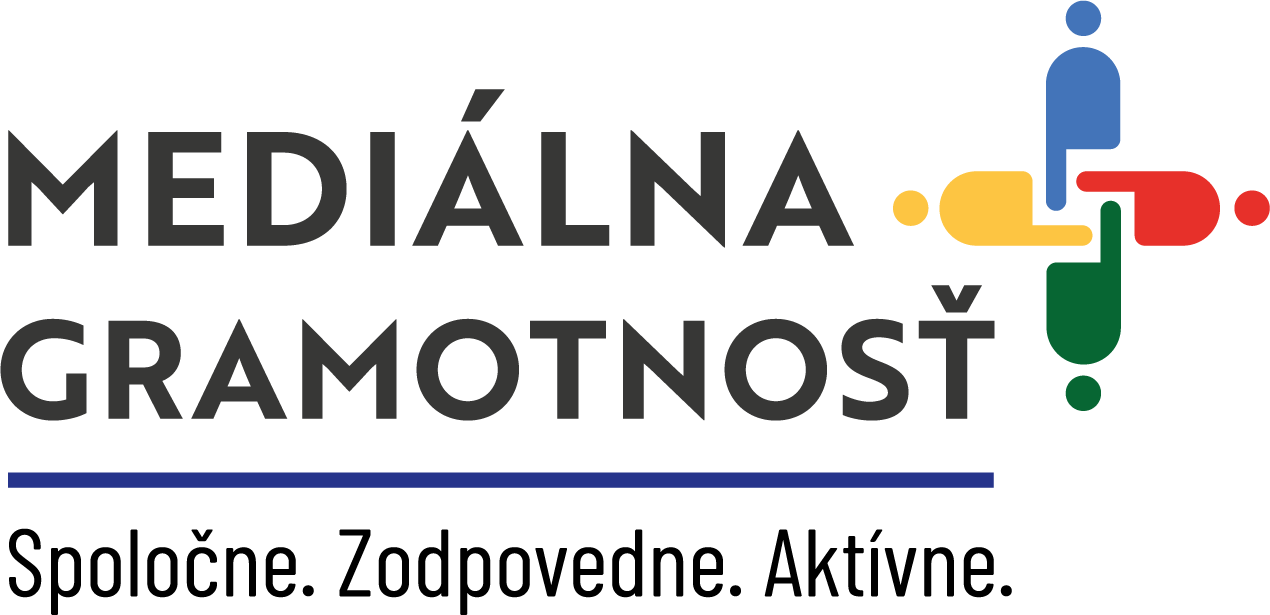Negative information seems to dominate the media landscape because it captures the audience's attention. This was agreed upon by the panellists of the "Good News Isn't Sexy" discussion, organized by the Council for Media Services as part of Positive Media Week. The week was declared from June 19th to 25th, coinciding with World Positive Media Day on June 22nd.

Anna Sámelová, who participated in the discussion as both the head of news and current affairs at Radio and Television of Slovakia (RTVS) and as an associate professor at the Department of Journalism at Comenius University in Bratislava, pointed out that the Slovak audience is not used to paying for content. That's why our media operate in long-term existential crises and naturally provide information that they expect to have a higher readership, viewership, listenership, and interaction because more engaging information is easier to monetise.

Stanislav Matějka, the head of the Analytical Department at the Council for Media Services, drew attention to the algorithms of social networks, which display posts with the highest interaction to users. This happens regardless of the content's focus, mainly based on the user's previous behaviour. He emphasised the growing need for effective regulation of digital platforms, aiming for greater transparency in their operations, a topic the Council for Media Services has long been addressing.
A. Sámelová considers the current media regulation and legislation in Slovakia to be of high quality but reminded that "we have been behind on all media after a few decades of their functioning. However, when we can name a problem, we can also regulate it. And today, we are learning to regulate the online environment." As a positive step in this regard, she sees that digital platforms are no longer perceived merely as technology but also as a means of mass communication.
The panellists did not overlook the fact that thanks to technology, we are closer to events than ever before. We learn about tragedies immediately after they occur, and we experience wars in real time. Zuzana Juráneková, a psychologist from the organisation IPčko, highlighted the importance of building resilience against the omnipresent information environment; otherwise, we will be overwhelmed. "At the same time, news provides us with a sense of relative safety, and distance, and allows us to contemplate how we would behave in the same risky situation. They awaken empathy for the victims and motivate us to take action that can improve their situation to some extent," she emphasised, highlighting the positive effects of exposure to negative news. However, she warned of the risk of retraumatisation when these topics are improperly presented in the media.
Regarding the common thesis about the risky influence of social networks, especially on children and youth, who are considered their most frequent users, Martina Bolibruchová from the organisation Zmudri.sk noted that "young people primarily use social networks for entertainment; they grew up with them, so they know what they can do on each platform, what they are for, and what to expect from them." Together with A. Sámelová, M. Bolibruchová pointed out that, on the contrary, "representatives of older generations are less capable of filtering which information is trustworthy because they have been consumers of media that were trusted without limits for many years."
And that is precisely the space for activities aimed at developing media literacy and related competencies, such as critical thinking and reading literacy. In Slovakia, many entities from state and public administration, the non-profit sector, academia, and media representatives have successfully engaged in this field for many years. The newly established platform called Media Literacy+, which is under the coordination of the Council for Media Services, aims to connect their activities, coordinate them, and thus achieve a greater impact on target groups. The platform emerged from a series of working-level roundtables that extensively mapped and connected these activities and organisations. On the first day of Positive Media Week, the Council for Media Services introduced the platform Media Literacy+ to the general public for the first time.

Several members of the platform Media Literacy+ have joined Positive Media Week and will carry out various activities online and in-person throughout the week, including in schools, as part of their agenda.
The goals of the Positive Media Week initiative are:
● spreading and creating positive media content,
● contributing to respectful communication in online discussions,
● appreciating the work of responsible creators of media content,
● contributing to increased critical thinking among recipients through activities,
● communicating about the impact of media content on mental health.
Anyone is welcome to join this initiative, also by sharing thematic posts on social networks.
